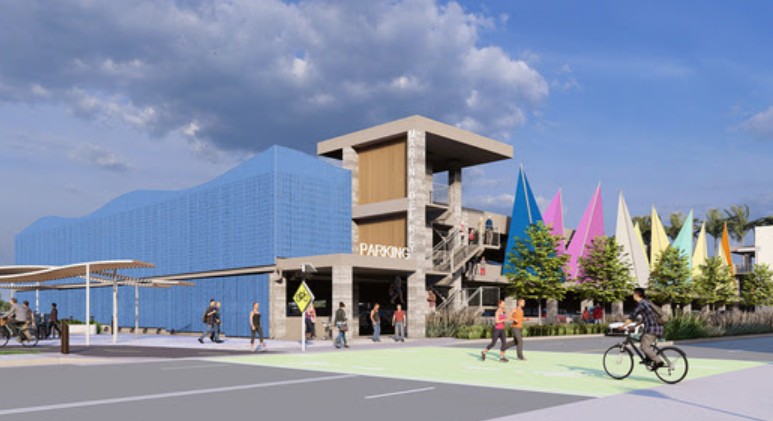![The latest cover of the city of Los Angeles draft Mobility Plan 2035. Image via DCP [PDF]](https://lede-admin.la.streetsblog.org/wp-content/uploads/sites/50/2015/05/MobilityPlan2035cover15Aprdraft.png?w=622)
Los Angeles has nearly 100 neighborhood councils, which are elected bodies of community members who volunteer untold time and resources in order to better connect city government with city residents and vice versa. While some might debate the relative efficacy of these organizations in small “d” democracy, neighborhood councils are the closest thing that the city of Los Angeles has to a formal network of resident voices.
As a member of the Los Feliz Neighborhood Council, I’ve had the opportunity to better understand how this representative government effort can and cannot work. As the only democratically-elected neighborhood-based organizations throughout L.A., neighborhood councils are the city’s best chance at conveying important information to all of its residents as well as getting feedback on changes in the community that are of greatest interest to residents.
Los Angeles’s Mobility Plan 2035 is a framework that deserves the attention and support of L.A.’s neighborhood councils. As of this writing, only two neighborhood councils formally supported – including the Los Feliz NC – and three formally opposed the Mobility Plan. It is important for all neighborhood councils to understand what is at stake with this plan and why its passage and implementation are mission critical for all of us.
Neighborhood councils should support the Mobility Plan 2035 first of all because it is just that: a plan. One of the biggest challenges facing neighborhood councils is an inconsistent approach by the city to new development and to changing infrastructure. The Mobility Plan not only establishes a set of objectives based on a researched perspective and vision, it then lays out a framework and a timeline. This vision combines network specificity with timeline flexibility. For neighborhood councils, this is the best of both worlds, as the city has said exactly what it intends to do in the next 20 years while it has also provided latitude to engage constituents on the when and how these changes will take place.
Neighborhood councils should support the Mobility Plan 2035 because it moves L.A. to Vision Zero. Some councils and homeowners’ associations are grumbling about the possibility of additional delays by first responders (while ignoring the very real delays caused by doubling-down on our current lack of transportation vision). However, the best way to improve safety is to not need first responders in the first place, and the next best way is to create streets with easier places for cars to make room for first responders, which complete streets are generally better at providing.
To the point on safety, consider that the rate of people dying on L.A.’s streets is double that of New York City; and consider that, in the first six months of 2015, L.A. has already lost 150 people on its streets. Vision Zero sets the goal that, by 2035, no one else will die on our streets. That vision includes people walking, biking, and driving. For neighborhood councils, the safety and well-being of our residents must take precedence above all else.
Neighborhood councils should support the Mobility Plan 2035 because it gives our constituents more options. Probably every neighborhood council would swear by their neighborhood having the worst parking in all of Los Angeles. And don’t get people started on traffic! Traffic in Los Angeles, though, is as old as the city. L.A.’s streetcar system – at one time the envy of the world at over 1,100 miles – started to decline in part due to traffic congestion from myriad cars slowing streetcars. L.A. has been trying to build itself out of congestion for at least the past three generations, from paving over those thousands of streetcar lines to create more room for private automobiles, to slicing 8- and 10-lane freeways through whole communities and displacing tens of thousands of Angelenos in the name of mobility. Neighborhood councils have a role to play in seeking and supporting new, creative solutions to one of our region’s most vexing problems. Giving people options means that they don’t have to drive and that they can get from point A to point B without having to get behind the wheel.
Neighborhood councils should support the Mobility Plan 2035 because we know better than most anyone how important our local businesses are to a thriving community. By supporting “complete streets,” neighborhood councils can greatly improve our neighborhoods’ walkability and economic vitality. The data on economic improvement and neighborhood engagement that results from complete streets is clear and compelling. For neighborhood councils, enhancing the success of our local businesses is something we can all support.
Finally, neighborhood councils should support the Mobility Plan 2035 because, well, “the kids.” It sounds hokey to say, sure, but so much of councils’ efforts support local schools and recreational opportunities for our kids, in hopes that they’ll have better health and long-term success as a result. At a time when local rates of diabetes, asthma, and traffic deaths and injuries continue to plague our neighborhoods at unacceptable levels, we have a responsibility to ensure that our children will not only want to take our place when we move on, but that they’ll be better-suited to do so than we were, owing to our collective vision today to ensure their better future.
The Mobility Plan 2035 lays out a plan that challenges all of us to envision an L.A. where safety, options, economic vitality, and public health take precedence over a singular focus on speed. Because we are called upon to act in the best interests of everyone in our communities, all of L.A.’s neighborhood councils should seize the opportunity to share in this vision and ensure that Los Angeles 20 years from now is a better place for our having served it today.
Luke Klipp is an elected member of the Los Feliz Neighborhood Council, where he chairs the council’s transportation and budget and finance committees. See also this earlier SBLA interview with Klipp.






